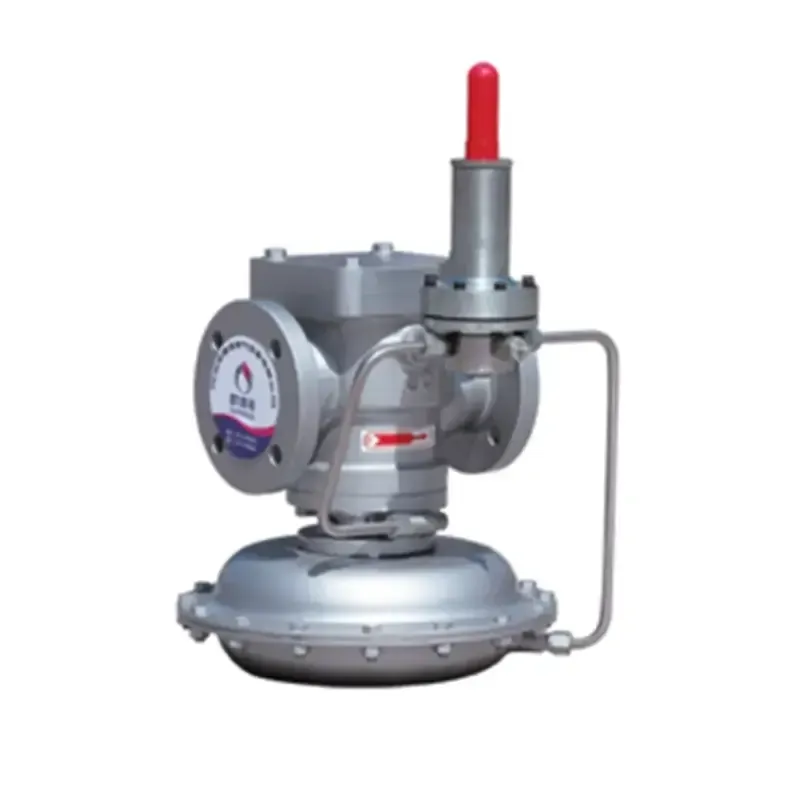
Jan . 01, 2025 14:01
Back to list
Pressure Regulation Valve Functionality and Application in Industrial Systems
Understanding Pressure Regulating Valves
In various engineering and industrial applications, managing pressure levels is crucial for ensuring safety, efficiency, and performance. One critical component that serves this purpose is the pressure-regulating valve (PRV). This innovative device is designed to automatically maintain a constant output pressure regardless of fluctuations in the input pressure or variations in flow rate. In this article, we will explore the functionality, types, and applications of pressure regulating valves.
What is a Pressure Regulating Valve?
A pressure-regulating valve is a mechanical device that automatically controls the pressure of a fluid within a system. It functions by adjusting the valve opening based on the pressure feedback it receives. This ensures that the downstream pressure remains stable, even if the upstream pressure varies. Typically designed for use in liquid and gas systems, PRVs play a vital role in many industries, including water supply, oil and gas, and manufacturing.
How Do Pressure Regulating Valves Work?
The operation of pressure-regulating valves is based on a simple yet effective principle. When the input pressure exceeds the setpoint, the valve adjusts to reduce flow, thereby lowering the downstream pressure. Conversely, if the downstream pressure drops below the desired level, the valve opens more to allow increased flow. This self-regulating mechanism ensures that the system operates within a safe and efficient pressure range without manual intervention.
The valve consists of several key components, including 1. Spring The spring provides the necessary force to keep the valve closed until a certain pressure threshold is met. 2. Diaphragm or Piston This component reacts to the changing pressures, moving to open or close the valve accordingly. 3. Adjustment Screw This allows operators to set the desired downstream pressure level.
Types of Pressure Regulating Valves
Pressure-regulating valves come in various types, each designed to cater to specific applications and requirements. The most common types include
1. Direct-acting Pressure Regulators These are the simplest and most widely used types. They directly control the flow by adjusting the valve opening based on the pressure differential. 2. Pilot-operated Pressure Regulators These are more complex and utilize a small pilot valve to control a larger main valve. They are particularly useful in high-pressure applications, providing greater stability and precision.
صمام تنظيم الضغط

3. Electronic Pressure Regulators These advanced systems use electronic sensors and actuators to adjust the valve based on real-time data, offering high precision and control.
Applications of Pressure Regulating Valves
The usage of pressure regulating valves is widespread across numerous industries. They are essential in
- Water Supply Systems PRVs help maintain consistent water pressure, preventing leaks, and protecting infrastructure.
- Gas Distribution In the gas industry, PRVs ensure safe delivery of natural gas to homes and businesses by managing pressure variations.
- Manufacturing Processes Many manufacturing processes require specific pressure levels for optimal operation, and PRVs ensure these conditions are met.
- HVAC Systems In heating, ventilation, and air conditioning systems, regulators help maintain balanced pressure in duct systems, contributing to energy efficiency and comfort.
Conclusion
Pressure-regulating valves are fundamental components in many systems that require consistent pressure levels. Their ability to automatically adjust and maintain pressure ensures safety and efficiency in operations across various industries. Understanding how these valves work and their applications can help operations run smoothly, reduce costs, and enhance safety in any fluid system. As technology advances, we can expect even more innovative solutions in pressure regulation, further enhancing the capabilities of these essential devices.
Next:
Latest news
-
Safety Valve Spring-Loaded Design Overpressure ProtectionNewsJul.25,2025
-
Precision Voltage Regulator AC5 Accuracy Grade PerformanceNewsJul.25,2025
-
Natural Gas Pressure Regulating Skid Industrial Pipeline ApplicationsNewsJul.25,2025
-
Natural Gas Filter Stainless Steel Mesh Element DesignNewsJul.25,2025
-
Gas Pressure Regulator Valve Direct-Acting Spring-Loaded DesignNewsJul.25,2025
-
Decompression Equipment Multi-Stage Heat Exchange System DesignNewsJul.25,2025

